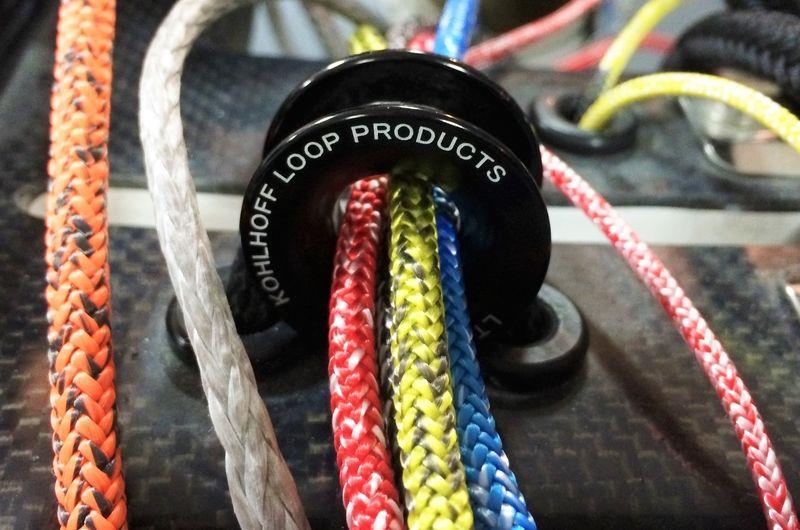
Lash Thimbles - What are they, and how do I use them?
by Kerri Robson 25 Mar 2019 02:00 PDT

Lash thimble © Kohlhoff LOOP® Products
Lash thimble, ferrule, rope thimble, bobbin or low friction ring... whatever you call them, there's no denying they are the perfect (low cost!) solution for a multitude of applications.
Perhaps the most flexible piece of sailing hardware on the market, lash thimbles can be used to tackle a variety of tasks and have several advantages that give them the edge on alternative sailing gear.
Manufactured from hard, anodised aluminium, rope thimbles are simple yet effective. Robust, durable and strong, lash thimbles are designed for rope to either run through them, or around their perimeter, when spliced.
Available in several diameters and sizes, unlike blocks, lash thimbles contain no moving parts. Although this means rope thimbles provide more friction than a block, they are manufactured from materials that are designed to keep friction at a minimum, plus no moving parts means there's no need to worry about breaking cheeks or damaging bearings!
As a result, lash thimbles are perfect for applications that require low speed, low line movement and low angle (as deflection increases, so does friction).
Armed with some Dyneema® single braid (which is slippery and runs smoothly) and a handful of rope thimbles, replace blocks or transform your boat with an infinite number of lightweight, efficient systems limited only by your imagination!
Replace clunky metal fittings with onboard systems that are not only extremely strong (lash thimbles have a higher working load relative to equivalent block size!), but easy to configure and extremely cost effective. Plus, these low friction rings don't chafe your line!
So, what can I do with lash thimbles?
- Replace blocks suitable for small lines, plus soft attachment lash thimbles don't bang on the deck
- Purchase systems
- Small line deflection lash rings are the perfect choice for changing the angle of a line E.g. furling lines, forequy, afterguy, inhauler, outhauler, sheets, control lines
- Lazy jack systems
- Backstay cascades however, due to the 180-degree angle, be aware this will provide more friction than a block system
- Strops and fairleads
- Static lines that don't require a lot of dynamic adjustment E.g. preventer, check stays, running backstays, barber hauler
- Reefing lines
- ... Pretty much anything!
At upffront.com, we recommend stocking up on a handful of these multi-purpose rope thimbles, alongside some Dyneema® single braid. Lash thimbles cost relatively little, are useful to have lying around and are perfect for 'on-the-fly' experimentation and system improvement. Explore our range of lash thimbles here.